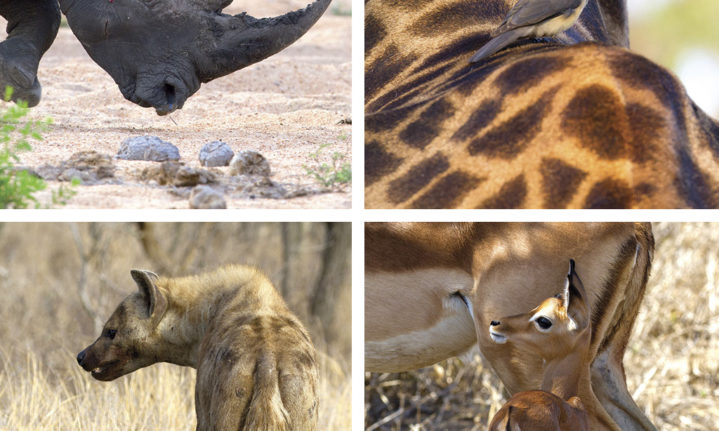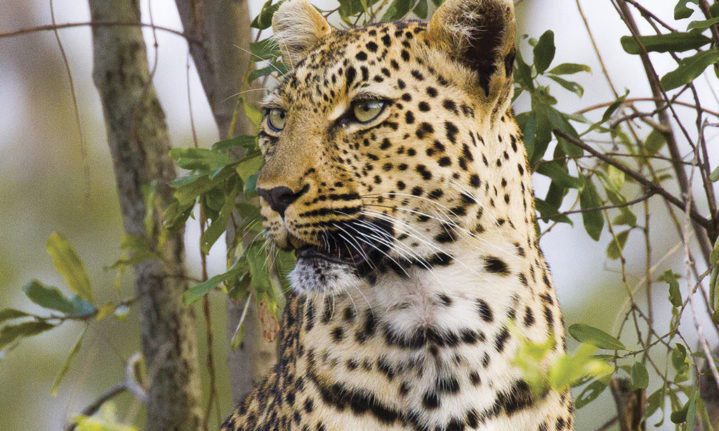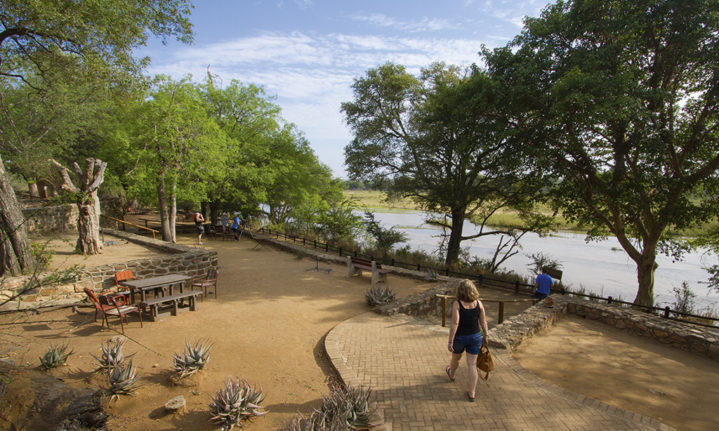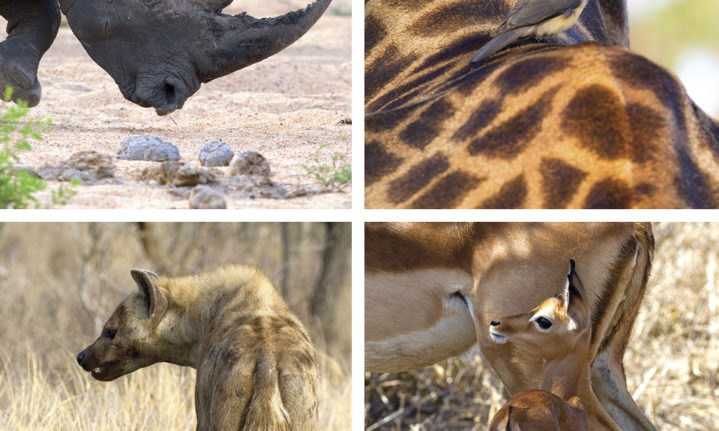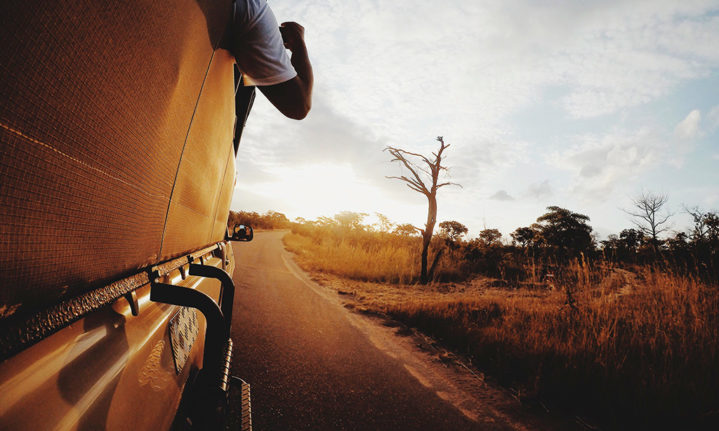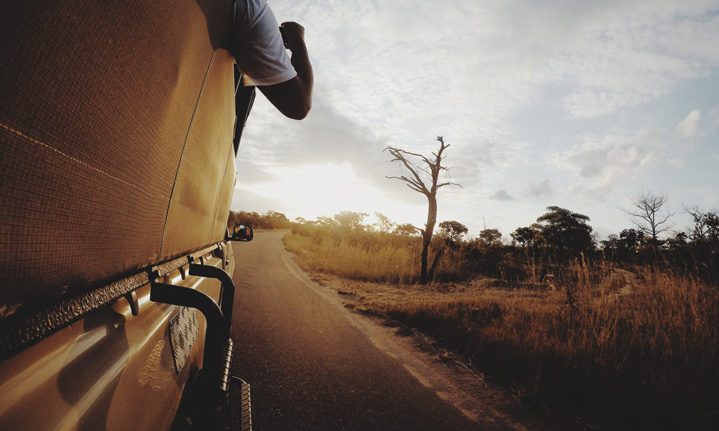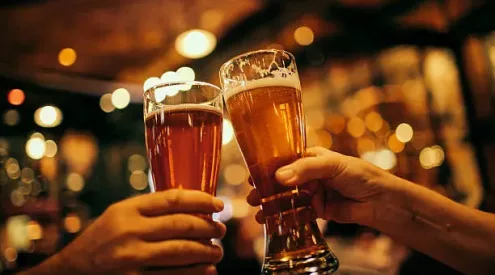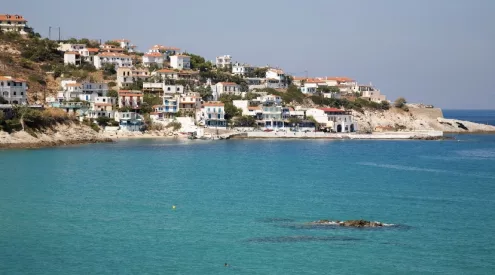With two-million hectares to choose from, you need to be either retired with a trust fund or very picky in Kruger. There’s a quintessential route linking Skukuza, Satara and Lower Sabie that everyone should do – and then do again and again…
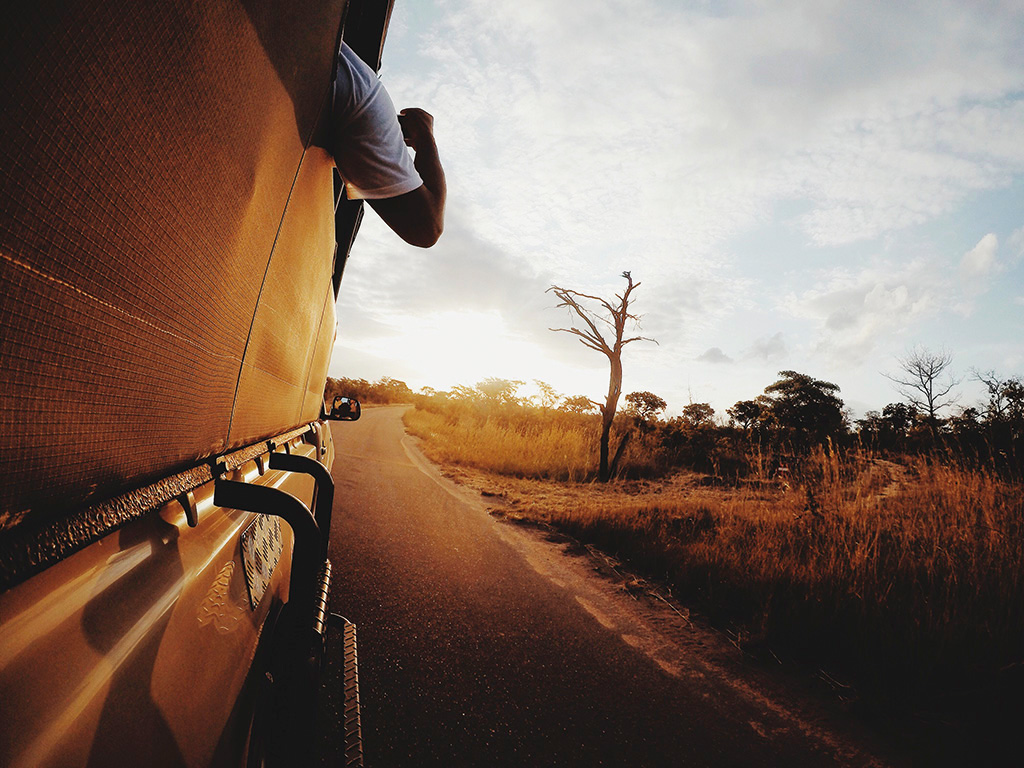
When my children were four and six I took them on their maiden trip to Kruger. On our first drive out of Malelane we saw a big male lion. He yawned, got up and walked towards us, then roared twice before loping off into the bush. Kira, aged four, watched his display with mild interest. Then she sat back in her car seat with a ‘mph’ sort of noise and said, ‘Now I want to see a tiger.’
And don’t we all – want to see a tiger, lion, leopard, cheetah, wild dog…? It’s called ‘The List’ and it’s the curse of Kruger and game-viewing everywhere.
People’s natural curiosity about big predatory animals, and lions in particular, came as a welcome revelation to a feisty Scotsman called Colonel James Stevenson-Hamilton. In 1902, Hamilton was appointed as warden of Kruger’s predecessor, the Sabie Game Reserve. His brief was to restore the antelope populations that had been decimated by poaching, and preserve them for future hunting. His modus operandi was to arrest all poachers (even white policemen out for some sport with their service revolvers) and shoot predators on site.
The warden’s tenacity earned him the Shangaan nickname Skukuza (‘he turns everything upside down’), but over time he began to doubt the wisdom of preserving animals for no other purpose than meeting a hunter’s bullet. By 1912, Hamilton had persuaded the Selati Railways to stop their trains overnight on the bridge over the Sabie River. Passengers loved seeing the animals, particularly lions, which in his words ‘suddenly acquired immense popularity with the sightseeing public and became [the park’s] greatest asset’.
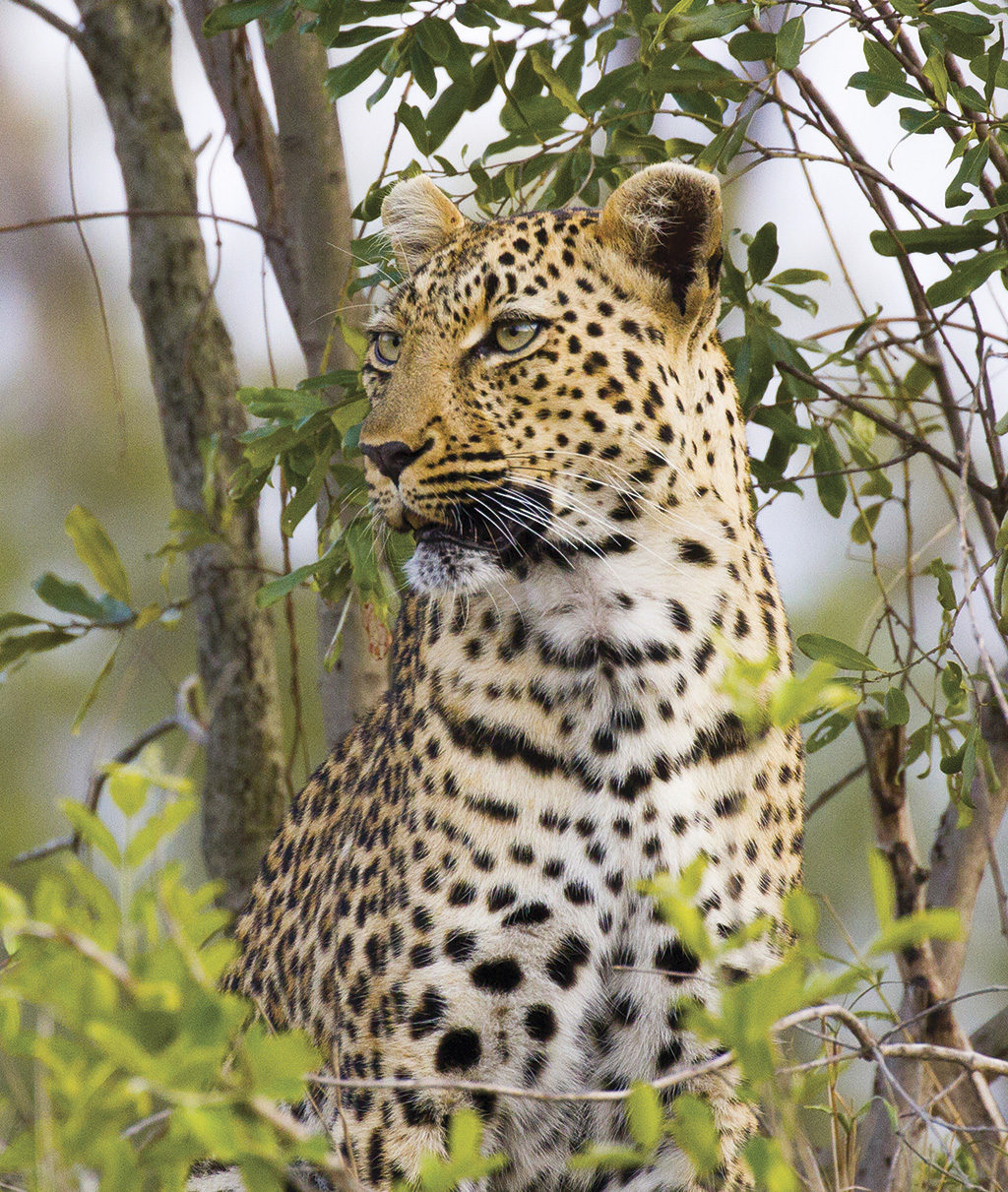
The H4-1 from Lower Sabie to Nkuhlu is the very epicentre of the ‘leopard triangle’. Back in the early days, farmers in the Lowveld called leopards tiere (tigers) – and shot them on site.
And so it came to be that the Kruger National Park was proclaimed in 1927. There were no rest camps and overnight visitors simply camped wherever they liked, slept in their cars, or up a tree if lions or leopards were being overly attentive. There’s a part of me that would love to sleep in a tree in Kruger. But in stark contrast to those days of yore, I began my trip at Skukuza Rest Camp, with a wildlife movie followed by a beetroot and butternut salad on the Mugg & Bean deck overlooking the Sabie River. And a fierce determination not to be a slave to the The List. In pull-offs from the H4-1, bound in no hurry for Satara next morning, I watched the rising sun creep up the trunk of a magnificent marula as vervets swung, one-handed from the branches. A fish eagle swooped over the river, and landed nearby, head back it gave its call-of-Africa cry. I pointed my lens at a baboon mom cradling a new-born. She gave me a ‘for goodness sake, enough already’ look as I clicked away. I spent an hour with an impala and her baby that intermittently kicked up its heals in pure exuberance. I felt like doing the same, such was the beauty of it all.
Orpen Rocks had a leopard – and 20 cars jostling for a glimpse, so I passed on. If this was 1928, I’d definitely have pitched my tent at the base and poured a sundowner (though I might not have lived to share the experience). The pretty koppie is named after Eileen Orpen, a major benefactor by whose generosity the park gained seven adjoining farms. And Mrs Orpen got a koppie, rest camp and a dam named in her honour. Even at midday, there was animal action at her delightful dam and shady benches from which to watch the spectacle.
As I crawled slowly towards Satara, stopping often for giraffe and elephant, the mixed woodland and thorn thickets gave way to more open savanna. Kruger’s second-largest camp is bang in the middle of plains that attract vast herds of zebra, wildebeest, waterbuck and buffalo – and that means it’s arguably the park’s best camp for lions. True to form, there was a mating pair busy near camp, whose roaring was the soundtrack to my braai on both nights. The H1-3 south from Satara is one of the best game-viewing roads in the entire Kruger and early the next morning it didn’t disappoint. First up was a hyena with two tiny pups and two older ‘teens’ in a den. They investigated my car and put on a great family show.
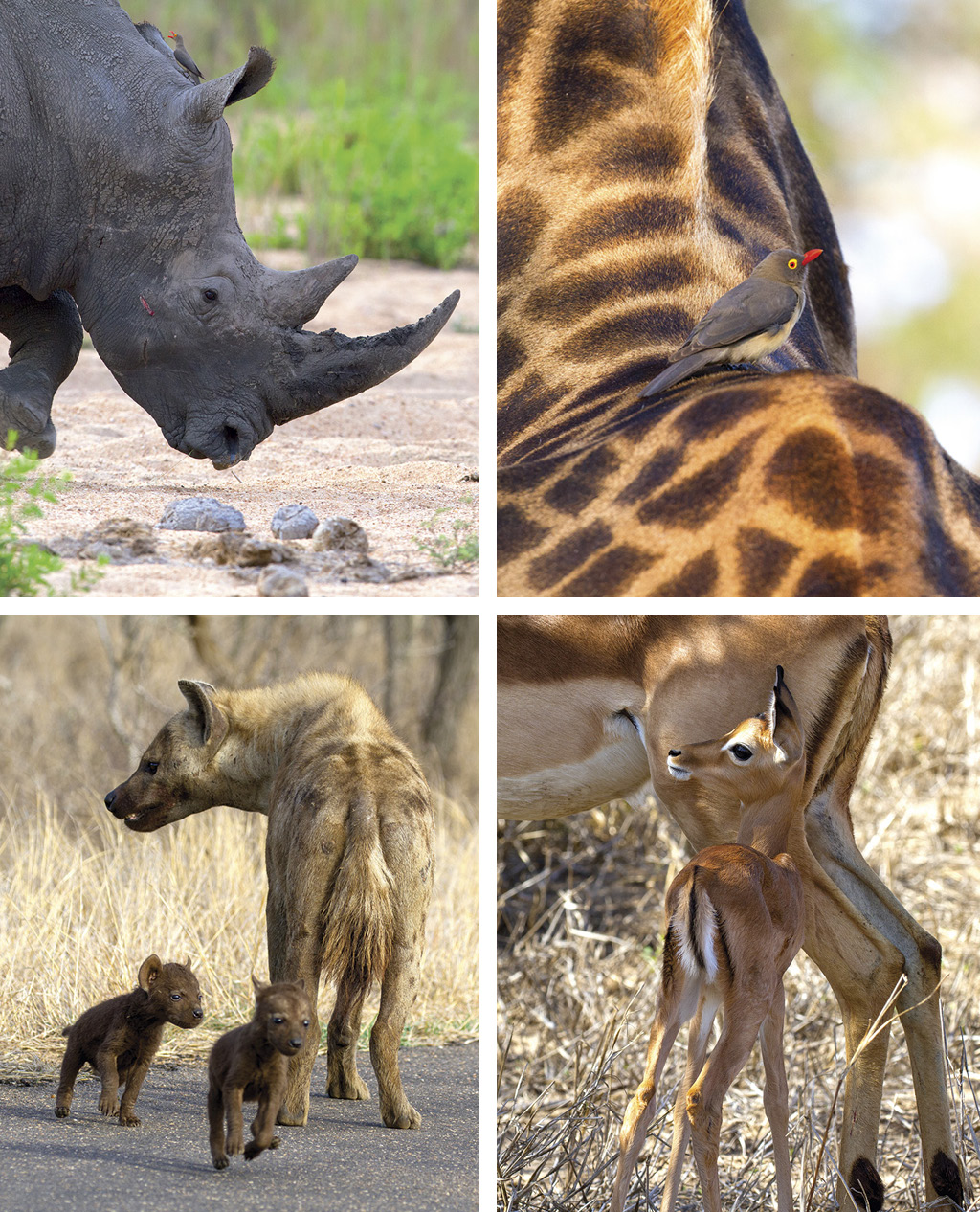
ABOVE Don’t mess with our mom – hyena females have triple the testosterone of their mates and are much more aggressive; new-born impala lambs are a popular prey for martial eagles. TOP Oxpeckers feed on ticks, lice and flies on rhino, giraffe and other big-game species, keeping them free of infestations; elephants, however, don’t tolerate these hitchhiking birds.
Further on, I pulled off to photograph a line of impala trudging, heads down, to a puddle in the almost-dry Nwaswitsontso river bed. Suddenly the tranquil plod burst into chaotic action as they scattered like spray in all directions. That meant only one thing, and soon my binoculars picked out two big, mane-less tawny heads – and two little tawny heads. The impala tried again. One lioness dropped into a stalk, ears flattened. I waited, she waited. On came the impala. Then she exploded from the shadows in a sprint. The impala took off and after a good effort she pulled up, flanks heaving. For the next hour I watched as various thirst-driven antelope herds approached cautiously. Rewind, repeat, until it got just too hot and both the lionesses and I gave up on a possible kill. Fortunately for me there was a fine frikkadel lunch to be had at the lovely Tshokwane Picnic Site, done up like an old trading post – and with moerkoffie and a good cappuccino too.
From the parched plains north of Tshok- wane, I meandered south on the H1-10, and three hours later entered a world of flowing water, reed cormorants, cattle egrets and herds of wallowing buffalo at Lower Sabie. Little wonder both guests and animals love it here.
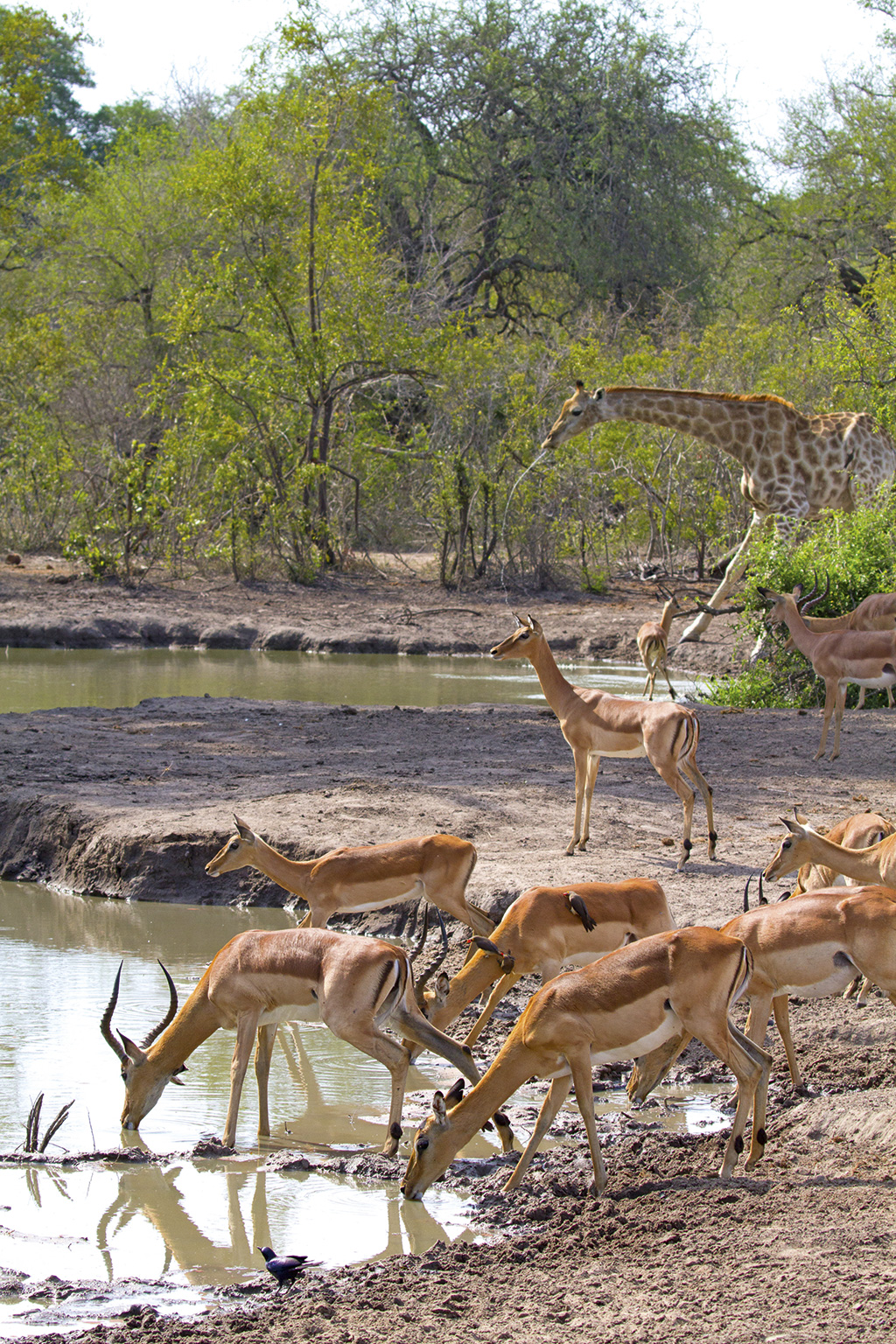
Drinking is a dangerous business for giraffe, so they are happy to have other ungulates around to sound the alarm timeously (or make for easier pickings) if a predator approaches
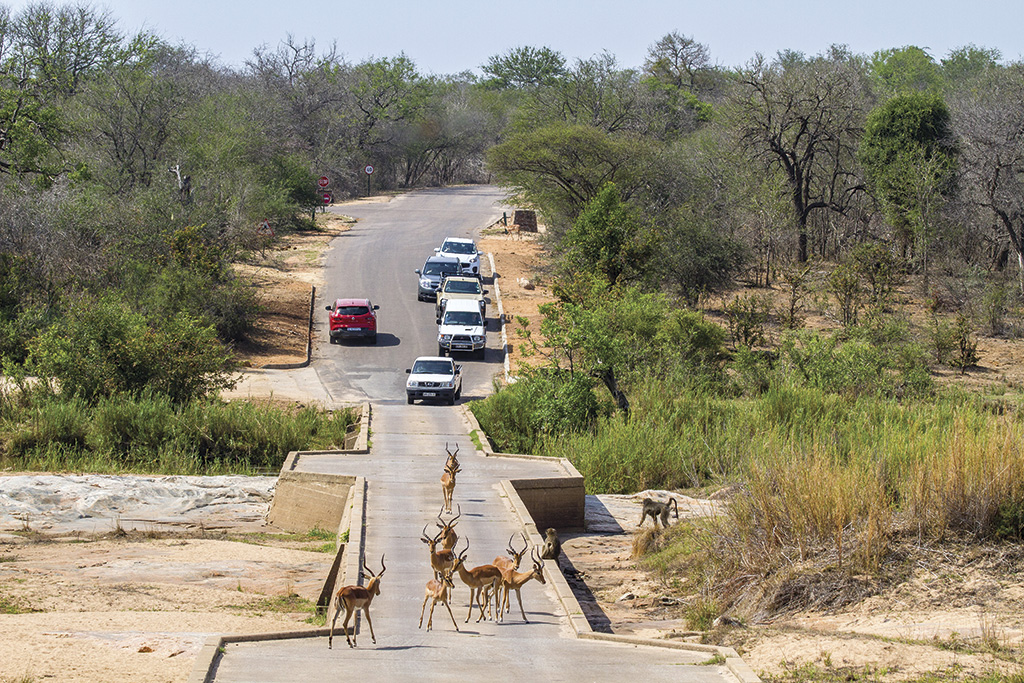
traffic jam Kruger-style caused by baboons and impala on the Sabie low-water bridge.
‘It’s because of our sweet grass,’ camp manager Bongile Louw told me, adding that the camp is fully subscribed half an hour after booking opens each year. Sweet grass maybe, but I was rather taken by the restaurant deck cantilevered over the river, the huge sycamore figs, coral, marula and fever trees and shady lawns. There was an old dagga boy (buffalo) in the reeds, regular elephant herds visiting, a goliath heron fishing, a pride of lions on the opposite bank making life miserable for thirsty buffalo and the ‘good-lord-deliver-us’ call of a fiery-necked nightjar while braaiing. All without leaving camp. On every foray from Lower Sabie I saw lions. I also watched an elephant calf drink from two different cows (suckling young do that habitually), whiled away the hotter hours in the stork- and heron-colonised hide at Ntandanyathi, and on an evening game drive, I met Dan the bird man. From London, Dan was spending seven weeks travelling the length of Kruger. Top of his sightings list were a martial eagle eating an impala lamb, holding a vigil (for eight hours) with a leopard cub in a tree until its mother came back, and watching lions and cheetahs get ugly with one another at a kill.
Seven weeks! Over the years I’ve done Kruger several different ways – private lodge, family self-drive, entirely alone – and all of them memorable for different reasons. Given that I only had seven days this time, my trip was very lucrative, particularly as my final sighting was a leopard and her cub. Yet en route to Skukuza airport (for the very convenient, but not cheap, direct flight back to Cape Town) I caught myself running, out of infernal habit, through my confounded checklist: lions, hyena with pups, leopard and cub … but alas no cheetah, my favourite of all the cats. In a park the size of Israel, with 16 different ecozones and Murphy’s Law not in your favour, there are no guarantees, except this one: you won’t see a tiger – unless it’s fried in garlic butter and served on your prawn salad at one of the private lodges.

Kruger’s ‘greatest asset’ for one warden was nearly the end of another. Ranger Harry Wolhuter managed to fend off one of these menacing beasts with a small knife when two lions attacked him. The knife is on display in the museum at Skukuza, along with the skin of the lion which didn’t survive its date with Harry.
Game Viewing From Camp
Skukuza
Best Drives
- Drive the golden predator triangle – H1-2 to Tshokwane picnic site for breakfast, H10 to Lower Sabie and back on the H4-1.
- A condensed version of this is the busy (in terms of vehicles) riverside loop on the H4-1, over the Sabie River on the H12, and back on the H1-2.
Top Drinking Spots
- Lake Panic, S42
- All along the Sabie River
- Low-water bridge, H12
- N’waswitshaka, S65
Stretch Your Legs Here
- Lake Panic Hide – no ablutions.
- Orpen Rocks – no ablutions.
- Kruger Tablets – no ablutions.
- Nkuhlu picnic site – ablutions, basic shop, gas skottels for hire.
- Tshokwane – ablutions, restaurant, shop and ATM.
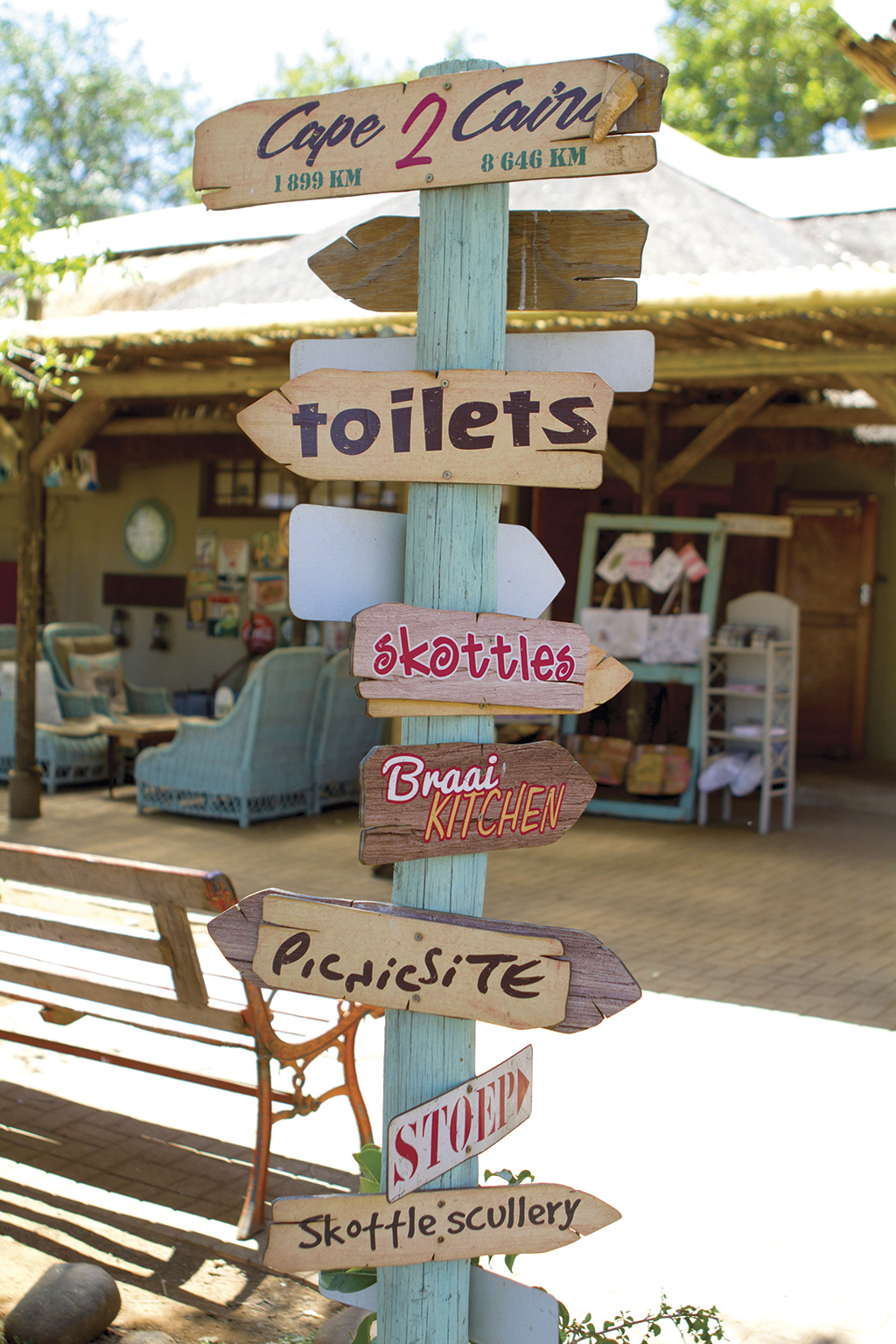
Tshokwane
TIP Visit the Stevenson-Hamilton Memorial Library and Museum and the adjacent dog cemetery in camp to learn how Bles, Buster, Tessa and other canine companions met their end.
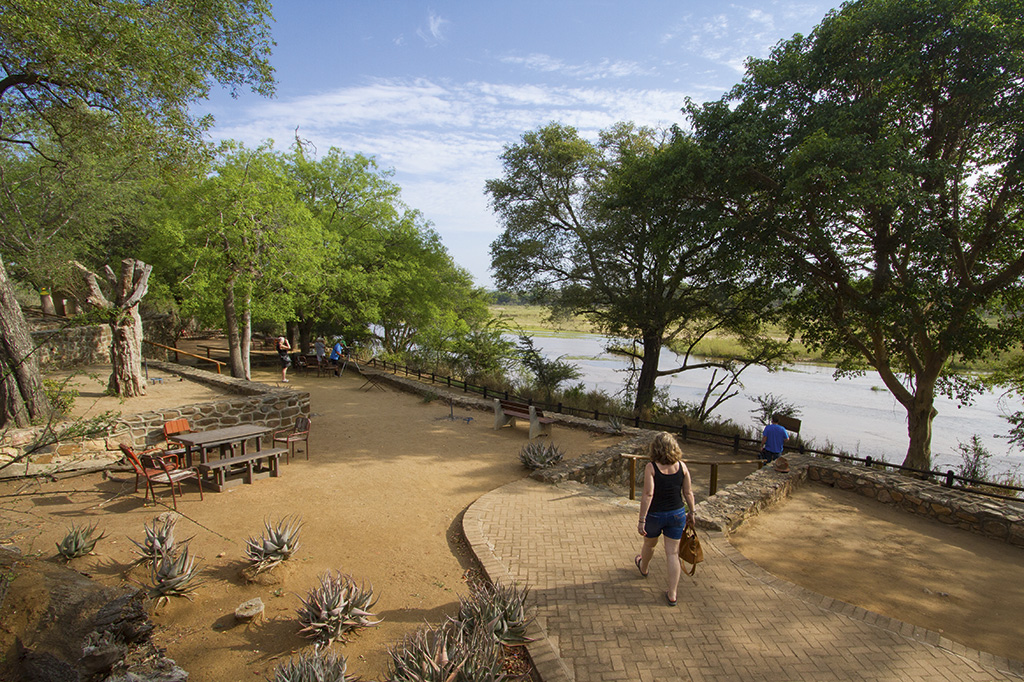
Nkuhlu Picnic Site
Satara
Best Drives
- The S100, meandering near the N’wanetsi River is informally rated as the best game viewing in Kruger. Drive a loop, north on the H1-4, S90, S41 to N’wanetsi Picnic Site and back on the S100 (or in reverse).
- The H1-3 to Tshokwane is also hard to beat; loop to Orpen Dam on the S32/35.
- A short (good for evening) drive that packs a punch is the H7 west to Nsemani Dam, up the S12 to Girivana Dam, and down the S40.
Drinking Water
- Nsemani Dam, H7
- Girivana Dam, S12
- N’wanetsi Dam, H6
- Orpen Dam, S32
Stretch Your Legs Here
- Timbavati Picnic Site – ablutions, gas skottels for hire, cooldrinks for sale.
- N’wanetsi – a lookout platform, ablutions, gas skottels for hire.
- Sweni bird hide – no ablutions.
- Head south on the H4-2, onto the S28 (detour on the S105 to Ntandanyathi Hide and the S137 to Duke waterhole); return on the H4-2.
- For prime cat country, go north on H4-1 to Nkuhlu for breakfast (watch the thieving vervets) and return the same way or via the S30 and S128.
Top Drinking Spots
- Sunset dam, very near camp.
- The low-water bridge over the Sabie River.
- Ntandanyathi Hide, S105
- Duke waterhole, S137
Stretch Your Legs Here
- Mlondozi Dam – ablutions and gas skottels for hire.
- Nkuhlu – shop, ablutions and gas skottels for hire.
- Ntandanyathi Hide – no ablutions.
TIP Case the Lubyelubye intersection with H4-1 for leopards, and the S28 intersection at the powerlines/Mosehla River for cheetah.
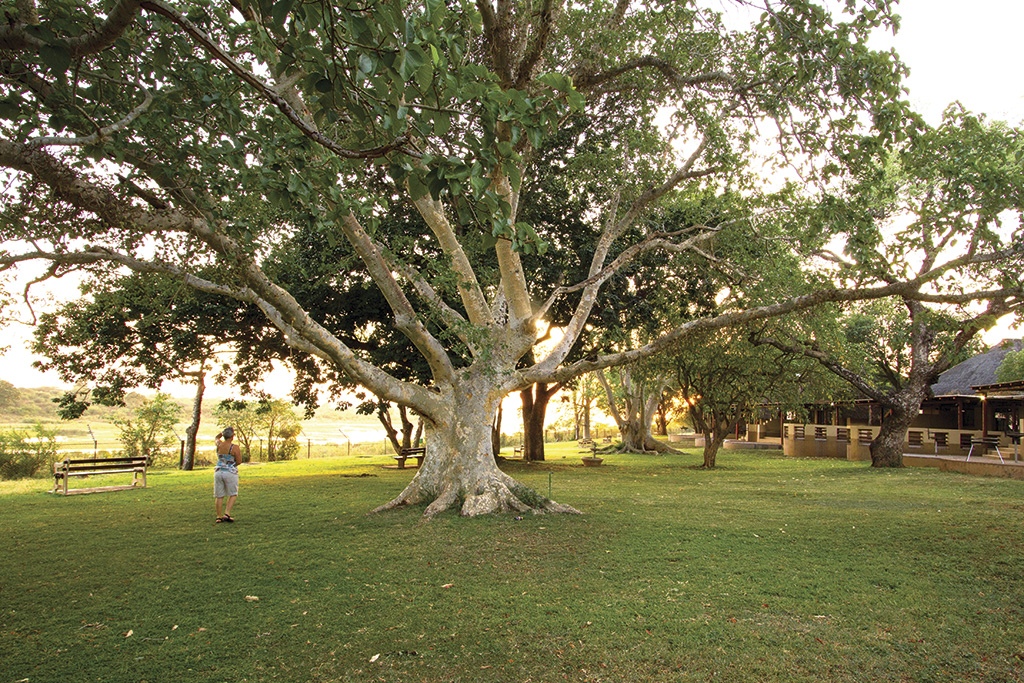
Lower Sabie
Words and Photographs by Cathrine Hofmeyr
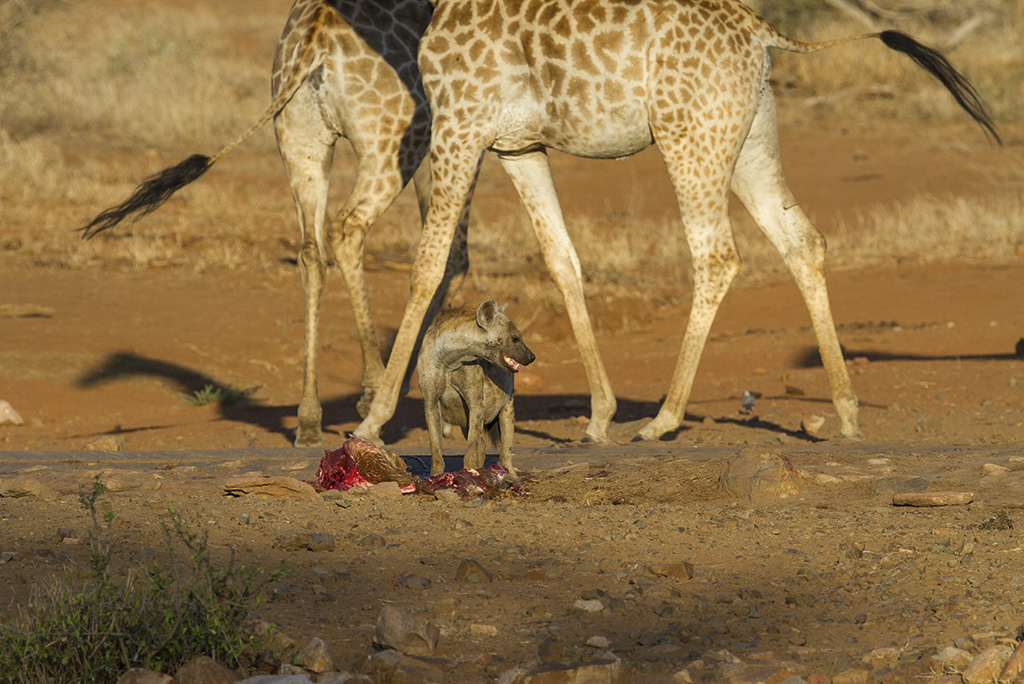
Girivana Dam
TIP If you’ve got a 4×4, drive the Mananga Adventure Trail north of camp; R714 per vehicle, book at reception. There’s also great birding in camp.
Lower Sabie
Best Drives









